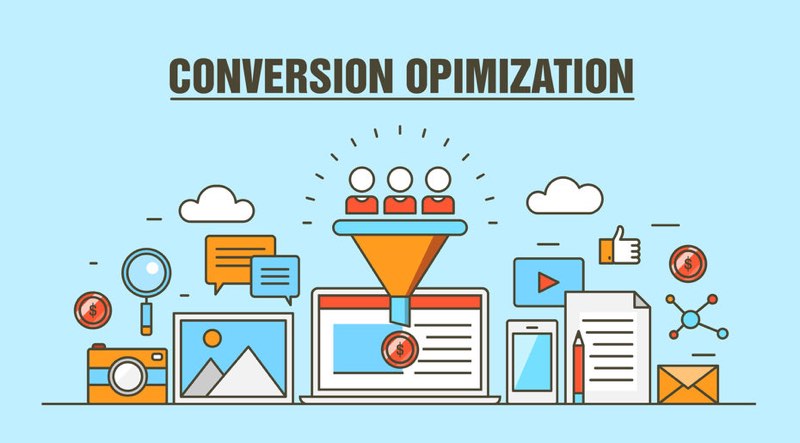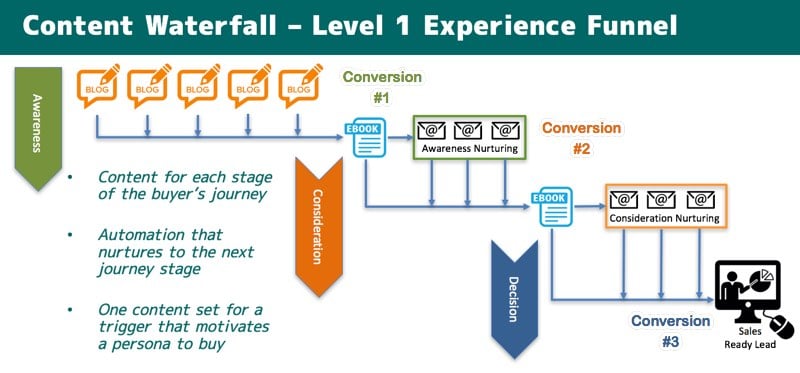Topic:
Inbound Sales
Want to succeed with Digital Marketing? If your answer is yes, then you need to know how Conversion Rate Optimization (commonly called CRO) works and why it is so important. Understanding how website visitors move through your website and what they do once they get there is critical. If gives you the insight you need to complete your website goal, whether it’s selling a specific product or a service. Think of a conversion as a website visitor who has now completed filling out a form on your website such as signing up for a subscription or simply completing the checkout process.
Ultimately, the purpose of increasing CRO serves to reduce the cost of business while also improving profitability at the same time. In more relatable terms, it just means trying to improve the sales efficiency and performance of your website.
With CRO there are so many variables that can affect the way you acquire and retain actionable website visitors such as design, branding, social proof, pricing process and your call to action. It can be hard to know what part of your website needs an overhaul and that’s where several factors come into play when trying to figure out your conversion rate in order to get the highest optimization experience.
In order to optimize the conversion rate of an offer or set of offers, you have to know first where to begin. Your business needs to gather quantitative data such as overall site analytics, surveying and segmenting website visitors (the people method) and tracking the conversions of each offer and call-to-action. Platforms like Hubspot provide detailed analytics of everything and enables A/B testing of each and every offer on a website. Analyzing all of this valuable information will help you to know where to focus your CRO efforts and where the majority of your visitors are coming from.
For a digital marketer, optimizing conversion paths on your website increases the number of leads for a particular volume of website visitors. Then as you invest in techniques to increase visitor volume you gain greater leverage from the investment in CRO. In other words, by increasing visitor volumes after CRO your digital marketing efforts are then multiplied.
Your quantitative information combined with real people statistics will let you know what page your visitors engaged most on and what product or page appealed most to them?
Pay close attention to what words your consumers use to describe your business or product. There are certain things that real life analytical data stats can’t clue you into and just improving your site traffic is not enough! Optimizing the words on a page including personalization for a specific visitor can significantly improve conversion rates.
Let’s talk about something called an “experience funnel”. An experience funnel is basically just a phrase that refers to the consumer journey through a series of steps until they are a qualified lead for sales. The journey a consumer takes when navigating a website and converting to a final sales goal. I like to think of it as a visual tool to gauge where your prospects are in their journey toward making their buying decision. Your sales funnel should be wide, capturing brand awareness near the top and then slowly narrow channeling to the bottom with the most sales and repeat customers.
This illustration shows an example of a conversion set for Inbound Marketing with three conversions in the pipeline.

If a business owner were to improve the first conversion rate by 10%, this effort would double the number of leads for sales at the end of the third conversion. In addition, by increasing the conversion rate by 10% for each of the three offers above, this would also increase the number of sales ready leads by over 8 times.
This chart shows an example calculation of the conversion rate for each conversion in the level 1 experience funnel above.

Too often, businesses fail because they try and convert the top visitor into a sale right away instead of moving the customer through a series of small conversions (called the buyer's journey). Timing is a key factor and your real goal is just to keep them coming back and nurturing them along their search for information until they are ready to buy. The Attract phase of the buyer's journey (the first stage in this funnel) and brand awareness are so important to overall conversions. They can’t buy from you if they don’t know your business or your product exists.
As a marketer, you have many nobs to turn in order to increase the number of leads. Many marketers just increase the Pay Per Clicks (PPC) budget, which is the old standby for getting your business website attention and generating more leads. Rising advertising costs make CRO even more critical because your business can do much better by optimizing conversions and the results can be dramatic.
Let’s face it, the competition for online advertising is stiff out there and most digital marketers compete for your customers business across the board. This is yet another reason why implementing a better CRO is so beneficial. If you want to convert a set of page visitors into actual sale, then you need to have a streamlined website that is easy to use and experience funnels that make conversion into a lead seamless.
Just about any form of digital marketing is an investment, so it’s important to keep generating an increased number of unique visitors who can convert into leads and optimize the conversion rate of each offer.
Finally, CRO improves the ability of other marketing efforts beyond just PPC. When a larger percentage of visitors click through your website to convert into a lead, all of your other marketing campaigns convert more as well. CRO is really a win-win investment for digital marketers looking to make the most out of their online businesses. Learn about CRO and more by downloading the eBook titled "30 Greatest Lead Gen Tip, Tricks & Ideas."
Ask us about our unique approach that creates a full-funnel "inbound" engagement model for your business that attracts and converts digitally engaged prospects.